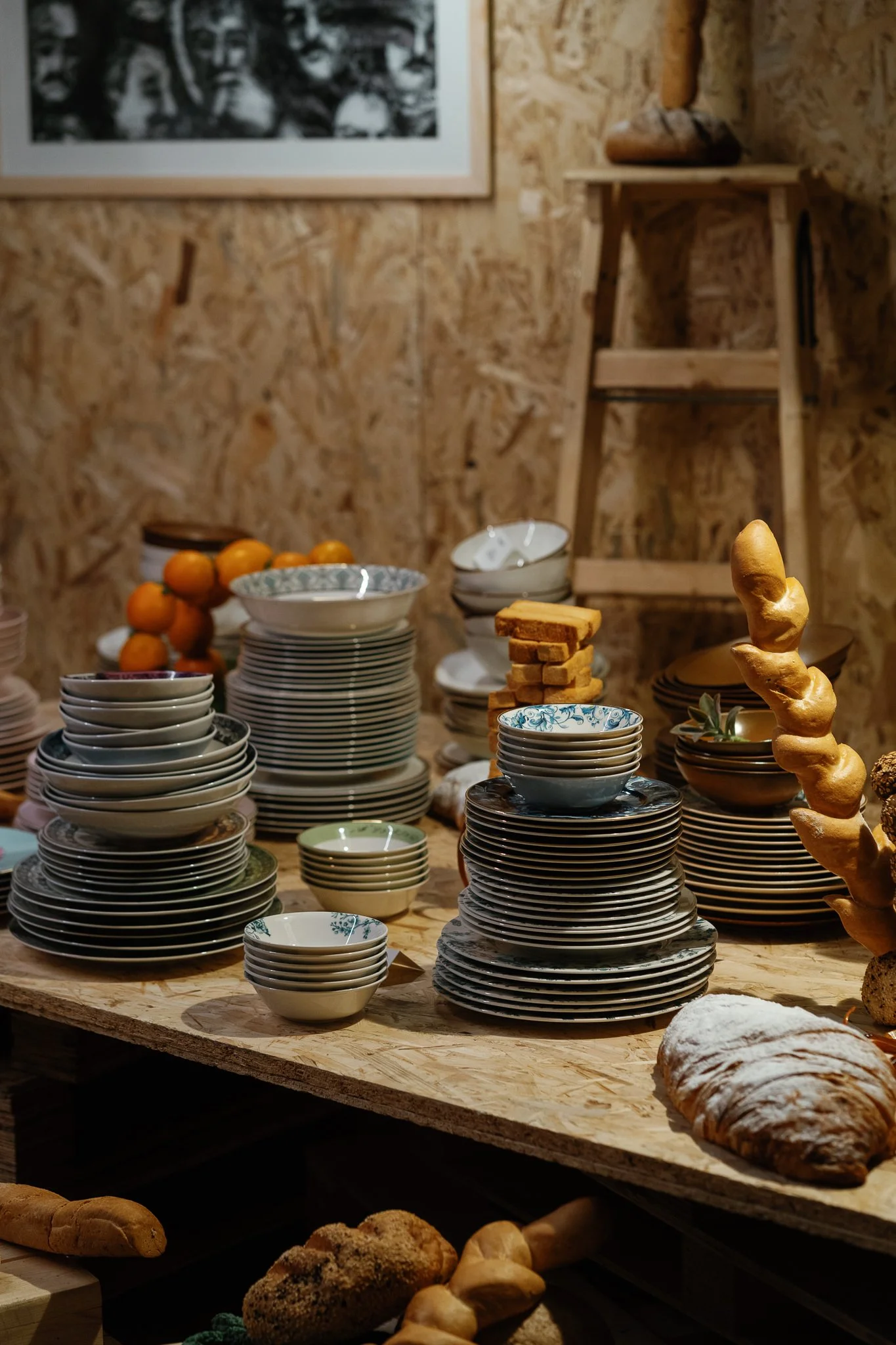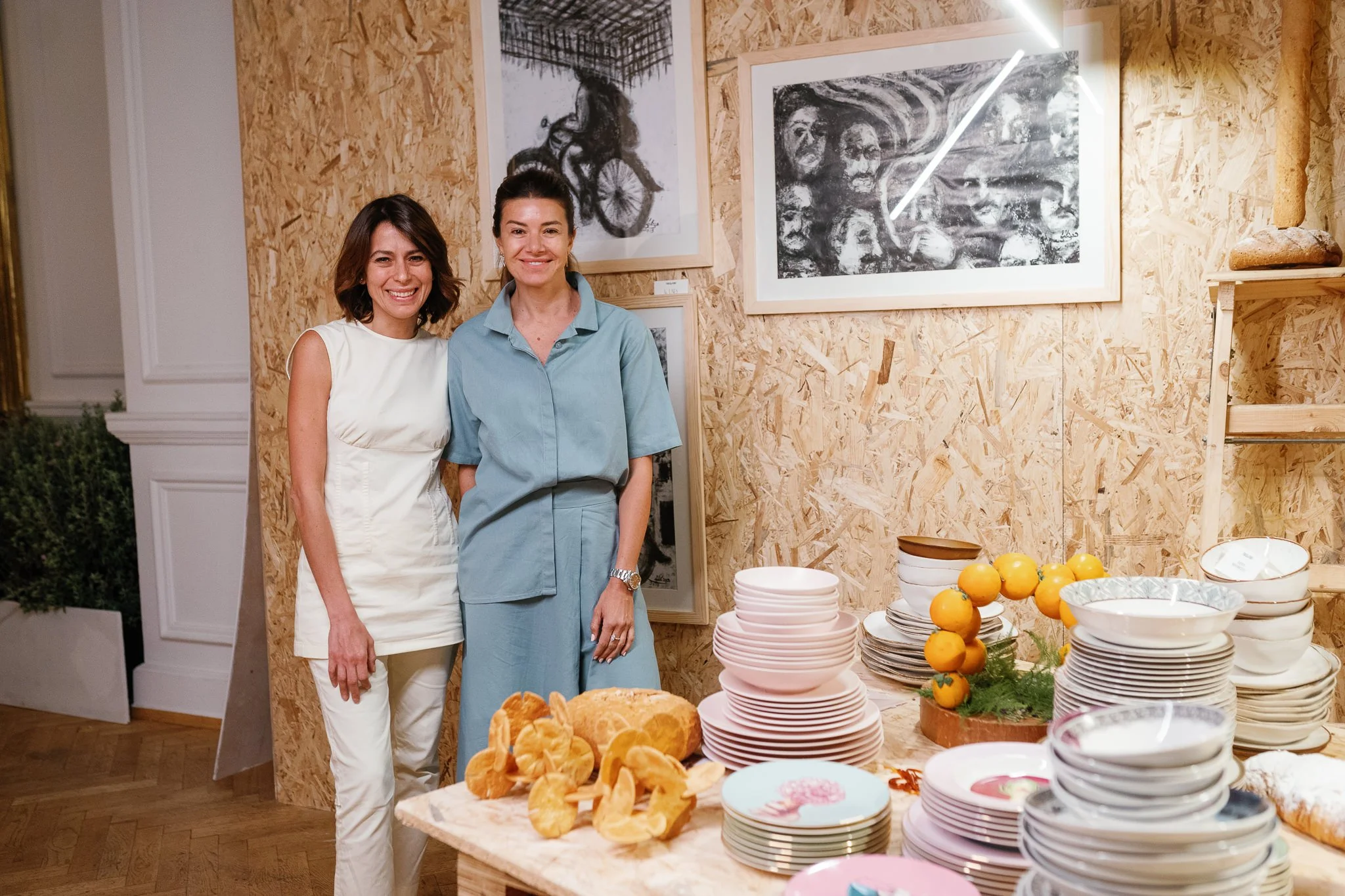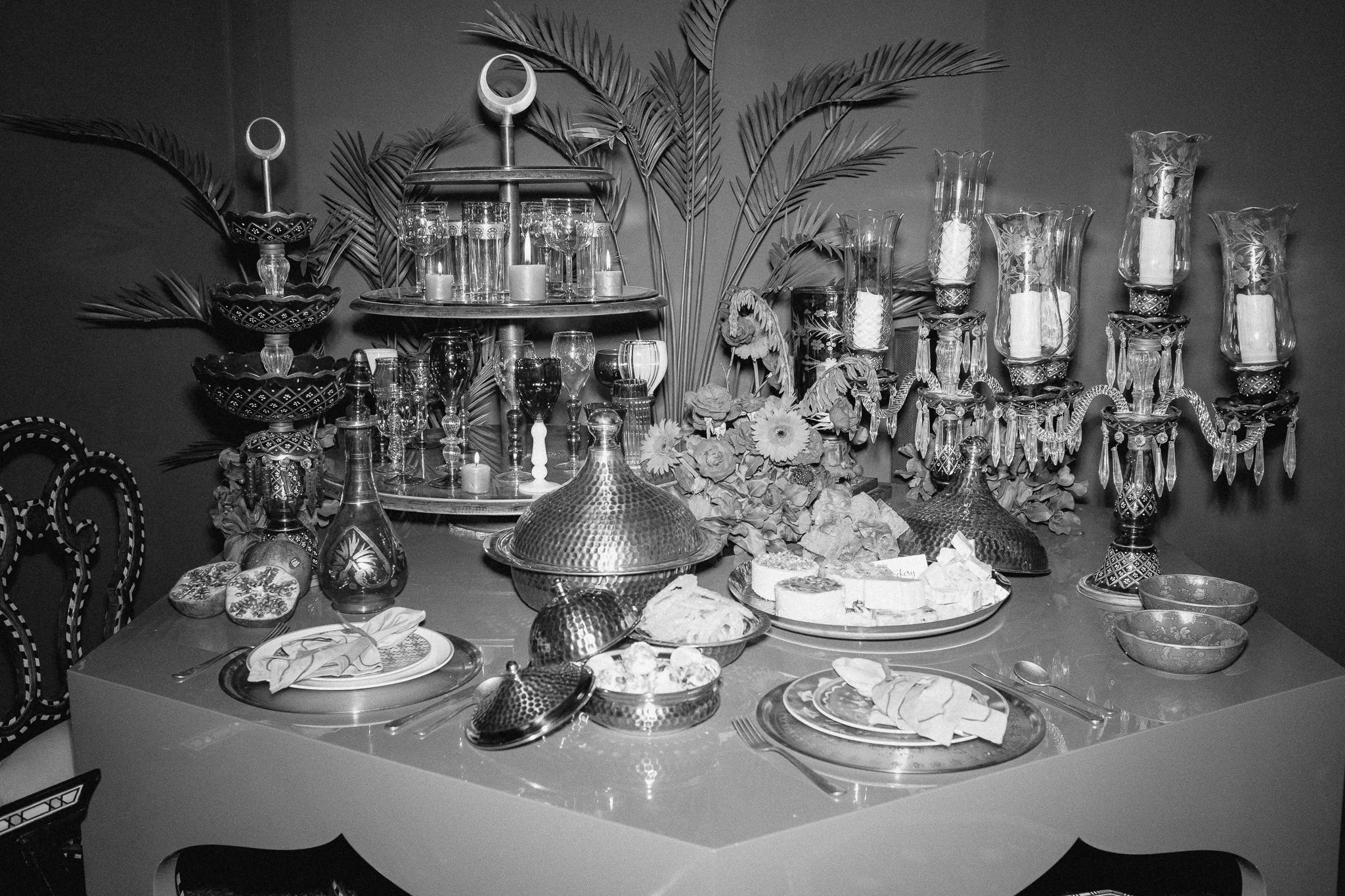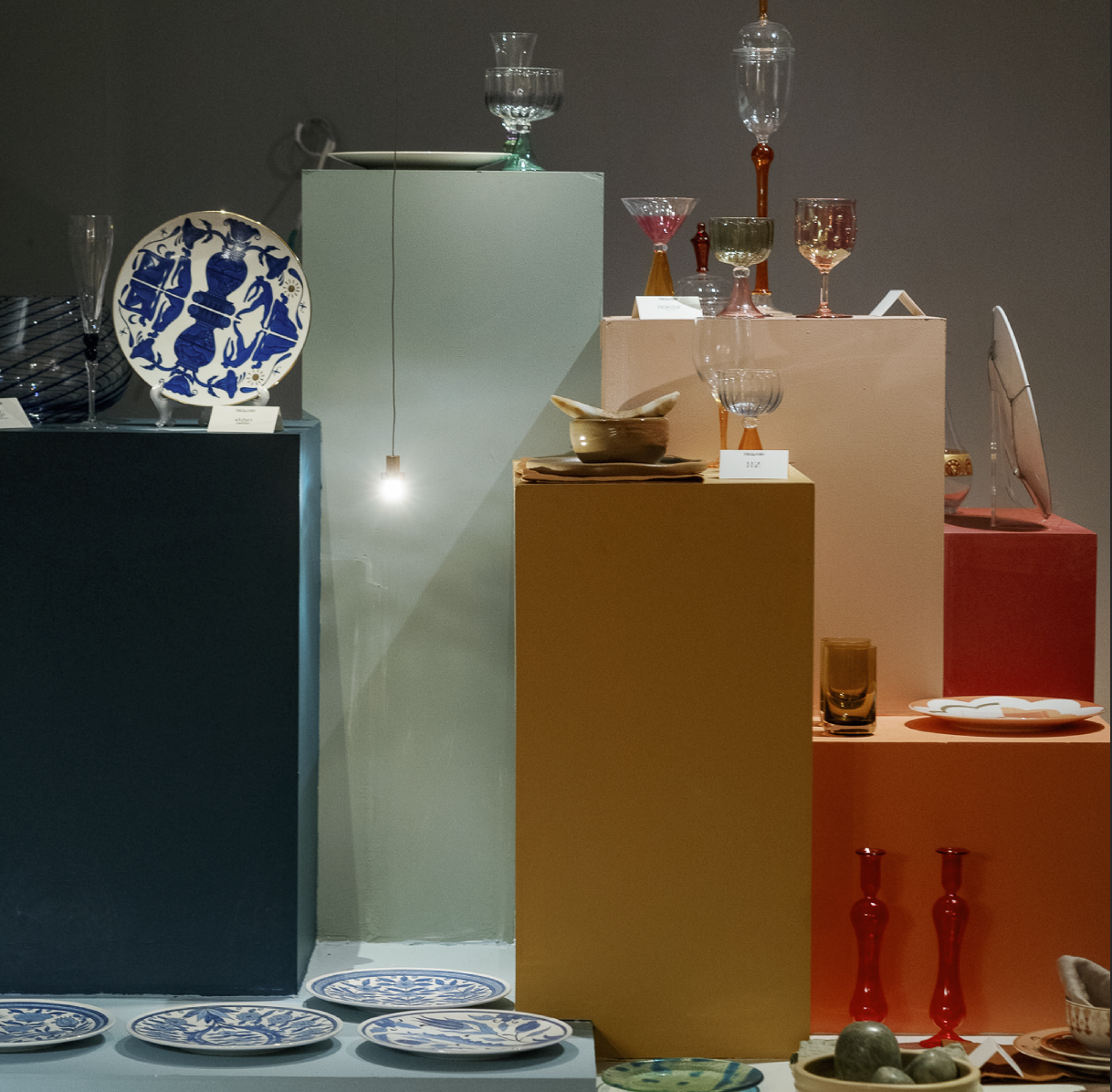TABLS OF CAIRO
Written by Reem Khamis
Tableware has existed for almost as long as the human race has needed to consume. In recent years, historians and scholars have begun to question whether the first civilizations designed vessels to fit their food, or learned to cook food that fit the vessels at hand. In either scenario, food trends and consequently tableware have continued to evolve over time, shifting to meet the demands of the aristocracy, morphing to fit the means of the poor, and yet again to keep pace with modern hosting and its diverse dynamics.
On the closing weekend of Cairo Food Week, Tables of Cairo took the spotlight within the Downtown District. Curated by Staged, the artistic duo of Sara Kassem and Rana Abou Zeid in their curatorial debut, the exhibition is an experiential journey of the history of food & hosting witnessed through the evolution of table setting. Within the Consoleya ballroom, Staged curated a journey through five distinct and unique periods of Egyptian history that played a critical and memorable role in transforming table art from a purely social interaction into remarkable works of art. Starting with the pottery, alabaster and wood work of Ancient Egypt, to the ceramics, geometry and calligraphy of the Ottomans, through arched entries to a banquet of bone china and sterling silver from the European-inspired roaring 20s, on to the post-war industrialization of the 60s - Egypt’s ‘Golden Era’, finally ending back in the present where local brands are reclaiming Egyptian heritage with the return of historic techniques and indigenous materials molded into modern designs.
The exhibition, a celebration of local artisanship and the unsung heroes of gastronomy, featured a diverse selection of Cairo’s tableware designers, producers and collector, from the industry mavens like ETTC, Fathy Mahmoud & Iman Farouk, to recently established powerhouses like Abracadabra, Karim Mekhtigian’s Analogue & Knana, to incredible newcomers like Shell Homage, Rofoof, Aicha’s Table & the newly launched Playtes by Nehal Leheta & Karim El Hayawan. A table is not complete without accessories, and so the Tables of Cairo were dressed with linens from Yamiya and Heba Linens, silverware by Zaki Boutrous, antiques from Alef & stoneware by Cairo Stone Studio. Interior designers Zeitoun Marble, Shewekar El Gharably and Nazly Habib filled the space with beautifully made tables and complimenting furniture, while Celeste cast a wonderful glow over the space with intricately designed lighting. Le Lab dressed the walls with a thoughtfully curated collection of Art and lastly, Flower Bar added the final floral touch to each display with period-relevant and beautifully arranged flowers.
In celebration of the exhibition’s opening, The Cookery Co. curated a brunch following the same theme. Additionally, the female-led culinary team brought a wondrous layer of depth to the exhibition through edible art within the exhibition. Cured egg yolks and grains dotted the ‘Ancient Egypt’ display while macarons and multi-tiered jellies decorated the baroque feast of the ‘Aristocracy Era’, and baskets of fragrant dried herbs & spices perfumed the Ottoman Era exhibition space.
Each of the chefs contributed items that formed a larger tasting menu to showcase the role of design in cuisine. Guests were welcomed with the first movement: A mock-up of the city block immediately inhabited by Tamara Haus itself, with a quartet of tartlet shells filled with varying tartares and miniature potato terrines set atop the buildings. A wheatgrass garden was craftily placed at street-level to enhance the visual representation of the urban locale.
Tables of Cairo is a representation of the wider ecosystem of Egyptian gastronomy. The evolution of food trends affects the development of tableware and dining etiquette, and vice versa. The exhibition will travel the world, presenting a unique and often unseen perspective on the effects of globalization and cultural change on dining and gastronomy, while also shedding light on the impeccable and immensely talented Egyptian artisanship. As the trends continue to shift, so too will the story the exhibition tells; a continually evolving reflection of local gastronomy.










